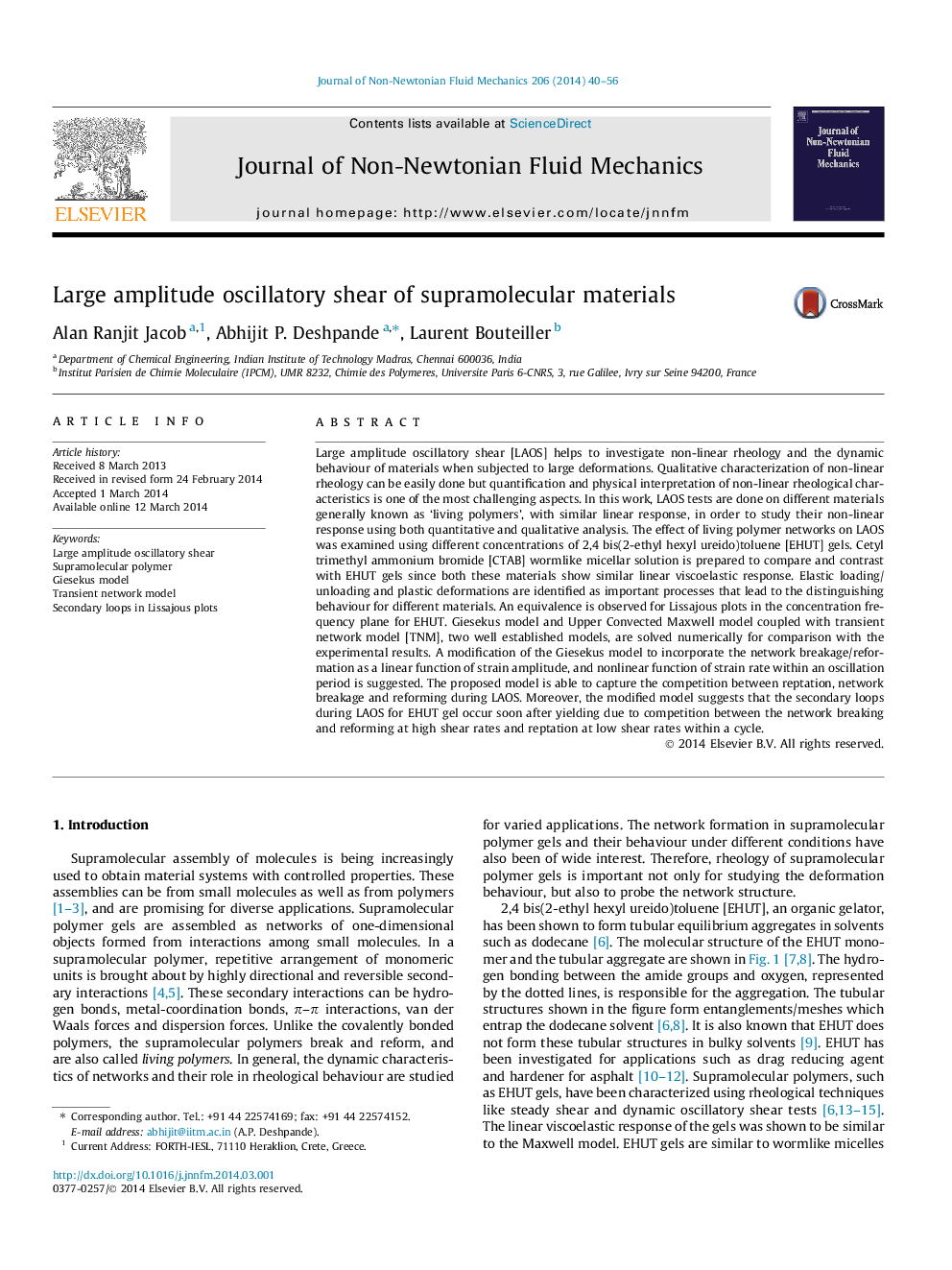| کد مقاله | کد نشریه | سال انتشار | مقاله انگلیسی | نسخه تمام متن |
|---|---|---|---|---|
| 670680 | 1459033 | 2014 | 17 صفحه PDF | دانلود رایگان |
• We present LAOS of two material systems with similar linear viscoelastic response.
• Materials examined are organogelator gels and wormlike micellar system.
• We present LAOS response at different concentrations and strains.
• Cyclic response during an LAOS cycle is understood using phenomenological models.
• We report the unique nature of secondary loops observed during the LAOS cycle.
Large amplitude oscillatory shear [LAOS] helps to investigate non-linear rheology and the dynamic behaviour of materials when subjected to large deformations. Qualitative characterization of non-linear rheology can be easily done but quantification and physical interpretation of non-linear rheological characteristics is one of the most challenging aspects. In this work, LAOS tests are done on different materials generally known as ‘living polymers’, with similar linear response, in order to study their non-linear response using both quantitative and qualitative analysis. The effect of living polymer networks on LAOS was examined using different concentrations of 2,4 bis(2-ethyl hexyl ureido)toluene [EHUT] gels. Cetyl trimethyl ammonium bromide [CTAB] wormlike micellar solution is prepared to compare and contrast with EHUT gels since both these materials show similar linear viscoelastic response. Elastic loading/unloading and plastic deformations are identified as important processes that lead to the distinguishing behaviour for different materials. An equivalence is observed for Lissajous plots in the concentration frequency plane for EHUT. Giesekus model and Upper Convected Maxwell model coupled with transient network model [TNM], two well established models, are solved numerically for comparison with the experimental results. A modification of the Giesekus model to incorporate the network breakage/reformation as a linear function of strain amplitude, and nonlinear function of strain rate within an oscillation period is suggested. The proposed model is able to capture the competition between reptation, network breakage and reforming during LAOS. Moreover, the modified model suggests that the secondary loops during LAOS for EHUT gel occur soon after yielding due to competition between the network breaking and reforming at high shear rates and reptation at low shear rates within a cycle.
Figure optionsDownload as PowerPoint slide
Journal: Journal of Non-Newtonian Fluid Mechanics - Volume 206, April 2014, Pages 40–56
